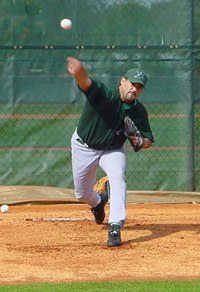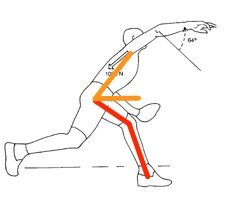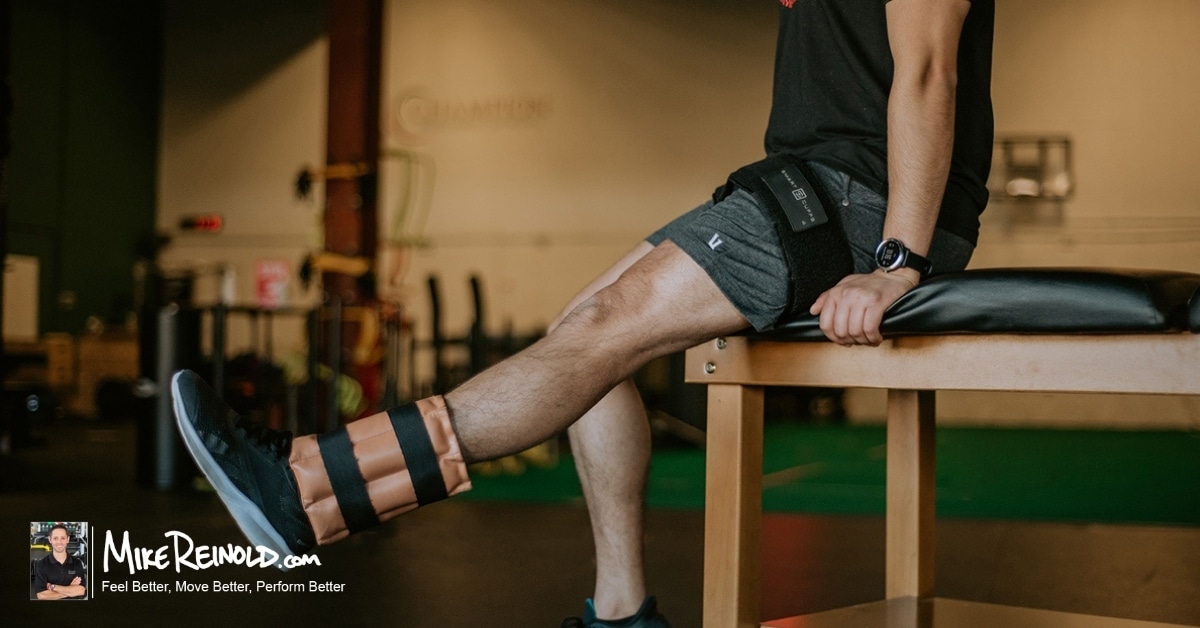 Most people know that one of the keys to successful baseball pitching is a consistent release point. This is a point that is driven home by coaches all the time. Most people focus on your arm slot, for good reason. Many times inconsistency in your arm slot can be the major cause of poor biomechanics and difficulty repeating your delivery. I see this a lot in young baseball pitchers that are trying to tweak their mechanics and pitchers that may have discomfort in their shoulder or elbow and are trying to take some pressure off the sore area.
Most people know that one of the keys to successful baseball pitching is a consistent release point. This is a point that is driven home by coaches all the time. Most people focus on your arm slot, for good reason. Many times inconsistency in your arm slot can be the major cause of poor biomechanics and difficulty repeating your delivery. I see this a lot in young baseball pitchers that are trying to tweak their mechanics and pitchers that may have discomfort in their shoulder or elbow and are trying to take some pressure off the sore area.
However, the act of throwing a baseball is a sequence of kinetic chain events that ultimately lead to your release point. There are several factors with your lower body and core that may be altering your arm slot and leading to an inconsistent release point without you even realizing.
5 Mobility Issues That May Prevent a Consistent Release Point
In this article I will discuss 5 issues that may be preventing a consistent release point while pitching. There are several areas that can be causing inconsistency, but I wanted to focus on mobility and stability issues that you can address.
If you have mobility or stability concerns in your lower half and core, your body is going to make the adjustment with your arm in order to throw a strike.
This is far too common and one factor in injuries in my opinion. These compensations are going to lead to wear and tear as well as decreased performance.
It is going to be difficult to make adjustments to your mechanics before cleaning up and mobility or stability concerns. Otherwise, you are kind of running up hill (or should I say throwing up hill?) trying to make mechanical adjustments on top of dysfunction.
Inconsistent Lead Knee Flexion and Trunk Flexion
 A very interesting biomechanical study was conducted by ASMI that looked at biomechanics over the course of a game to see if arm slot and a consistent release point changed. What they found was pretty interesting. Over the course of a game as the pitcher became tired, there was no change in arm slot at all biomechanically. In fact, there were relatively little biomechanical changes over the course of a game. However, they did find two things – a decrease in lead knee flexion and a decrease in trunk flexion.
A very interesting biomechanical study was conducted by ASMI that looked at biomechanics over the course of a game to see if arm slot and a consistent release point changed. What they found was pretty interesting. Over the course of a game as the pitcher became tired, there was no change in arm slot at all biomechanically. In fact, there were relatively little biomechanical changes over the course of a game. However, they did find two things – a decrease in lead knee flexion and a decrease in trunk flexion.
As baseball pitchers get tired over the course of a game, their bodies are more upright.
This leads to a higher and inconsistent release point, but it has nothing to do with the pitcher’s arm slot. Their arm slot was the same, but their release point was higher. This is a very important factor in understanding why a pitcher leaves his pitches up and has trouble getting the ball down in the zone late in the game.
This really demonstrates the importance of a few things:
- Lead leg quad and hip strength
- Lead leg quad and hip endurance
- Lead leg single leg stance stability
In addition to strength and endurance, I will also incorporate basic lunges onto an unstable surface, such as below, and progress to more dynamic activities over time.
I also work on low back and posterior chain endurance and stability. Here is an example of a drill to work on a consistent trunk flexion angle. The bands create a force trying to pull the trunk forward, creating a need for the body to stabilize.
Restricted Lead Hip Mobility
Another issue with the lead leg involves mobility as the baseball pitcher’s body rotates and transitions their body weight from the rear leg to the front leg during arm cocking and acceleration phases of throwing and then release the ball and travels into the arm deceleration and follow through phases.
During this movement, the body must rotate over a planted lead leg into a position of hip flexion, adduction and internal rotation. This is a challenging position to achieve and goes against our postural adaptations, so many baseball pitchers struggle to “get into their lead hip” in this fashion.
Any limitations in lead hip mobility is going to prevent the pitcher from closing their body. This can cause them to fly open, become more rotational, have their arm drag behind their body, or to decelerate with more of their arm and less of their lower half. All of these are not good things!
I use several drills and emphasize this “getting into your hip” position. Here is one basic mobility drill to encourage this hip mobility. The athlete stands in a split stance similar to their release point and rocks in and out of their hip. The coaching cue here is to pull your lead leg back into your hip.
For those that have more restrictions and can’t get into their hip well, they may need more posterior hip stretches, such as shown below. One thing of note is that I want the lead leg that you are stretching close to neutral rotation. It’s hard to get into this position without going into hip external rotation, but I do not want the hip externally rotated like you see in many common runner stretches. You can alter the area of mobilization but changing your body angle to the side and forward until you feel it in the rear of your hip.
Restricted Rear Hip Mobility
Most pitchers realize that stride length is going to have an effect on release point. While stride length often times is due to other biomechanical and timing issues, there is a potential for rear leg adductor tightness (groin) altering your stride length.
In my experience, this tends to occur more when there is a groin or hamstring injury in the rear leg or in the pitcher with hip impingement. I have even seen some pitchers with chronic MCL issues on their rear leg, especially in those with aggressive toe drag.
These concerns will obviously have to be addressed, but there are some general hip mobility drills that you can perform to maintain and enhance adductor mobility in the rear leg. Here are two basics that are easy enough to add to your movement prep and dynamic warm up, adductor foam rolling and mobilization.
Poor Rear Leg Stability
In addition to restricted rear hip mobility, the rear leg also has to stabilize the weight of the body at the top of the wind up when the lead leg reaches peak height. While this seems fairly basic to most people, it could be the equivalent of doing 200 single leg stance exercises for a starting pitcher if you include warm up. Your balance point at the top of the wind up is essential for the proper sequencing of the rest of your delivery.
Top bring physics into the discussion, your balance point is also where you start developing potential energy and transitioning to kinetic energy. To illustrate, when you draw back a bow you are building up potential energy to shoot an arrow. The more you pull back, the more energy you develop and eventually transfer to the arrow. Losing rear leg stability is the equivalent of drawing the bow back half way. You will lose some of that energy and force that you want to put behind the ball and direct towards the plate.
So, any issues with rear leg stability could lead to issues with power development, timing, and sequencing through the rest of the delivery requiring your arm to “catch up” to find the correct arm slot. This can be seen in people drifting and even some that drop-and-drive.
In addition to lower half strengthening exercises, I try to incorporate balance as well. Here is an example of just some basic single leg balance on an unstable surface. The foam pad simulates the decline of the mound. The goal is to pause at the top, maintain balance, and then control your body lowering back down to the start position. This is a quality over quantity drill.
Poor Core Control
As you are probably noticing, developing force towards the plate is a common theme in this article. Any energy leaks away from the plate are going to alter your mechanics and take away from your potential. Poor core control is one of the most common energy leaks I see, especially in young and/or loose pitchers. Core control seems to take longer to develop in young athletes, even as they get strong. Perhaps it has to do with growth spurts, but regardless, it appears that younger athletes have difficulty controlling their core during functional activities. Add the speed of pitching into the mix, and this core control is challenged even further.
For the loose athlete, they tend to rock back onto their joints to gain stability to make up for poor core dynamic stability. In the core, this is often seen in pitchers that arch their back significantly while pitching. This is often lack of anterior core control, taking your momentum away from the plate and becoming more rotational. This can alter your arm slot and put significant stress on not only your arm, but also you low back.
There are a lot of anti-extension exercises, such as planks and dead bug sequences, that should serve as the basic foundation for this core control. But once baseline core control is established, I tend to try to get the athlete in more specific positions. Here are a couple of anti-extension exercises in the stride position. The bands are pulling into extension, requiring the body to provide anterior core control. I will progress to then use a TRX Rip Trainer so that I need to prevent a combined extension and rotary force.
Before you start focusing on your arm slot to train a more consistent release point, make sure you have adequate mobility and stability below. I always recommend a thorough evaluation combined with manual therapy and some of the corrective strategies above (My Functional Stability Training series has many more examples of these drills and more). Don’t forget that you may have some mobility and stability issues with your lower body and core that may be causing and inconsistent release point and making it difficult to repeat your mechanics.
[hr]




